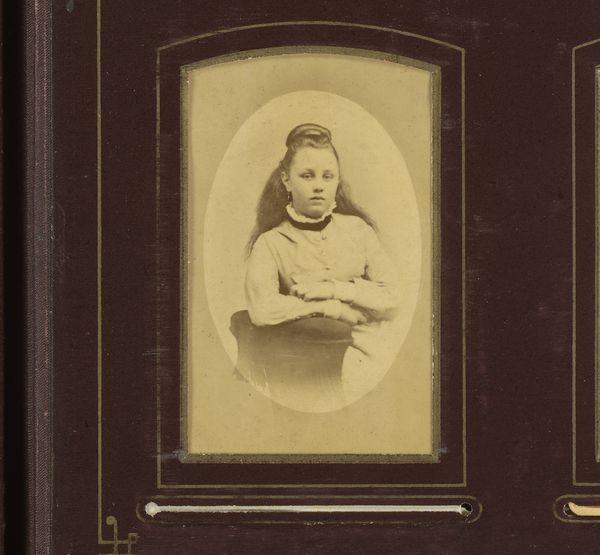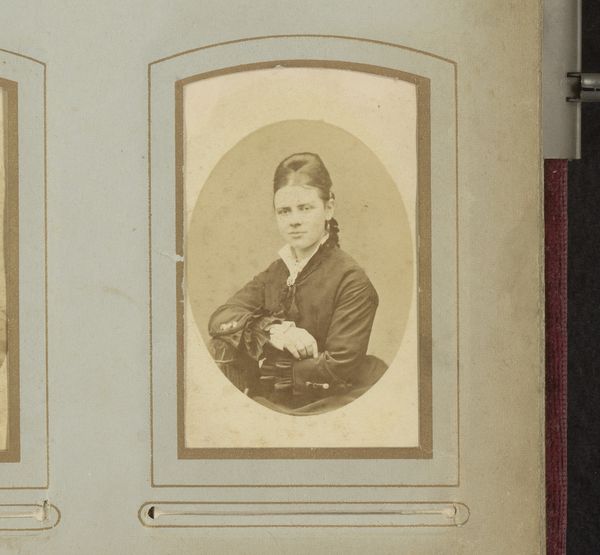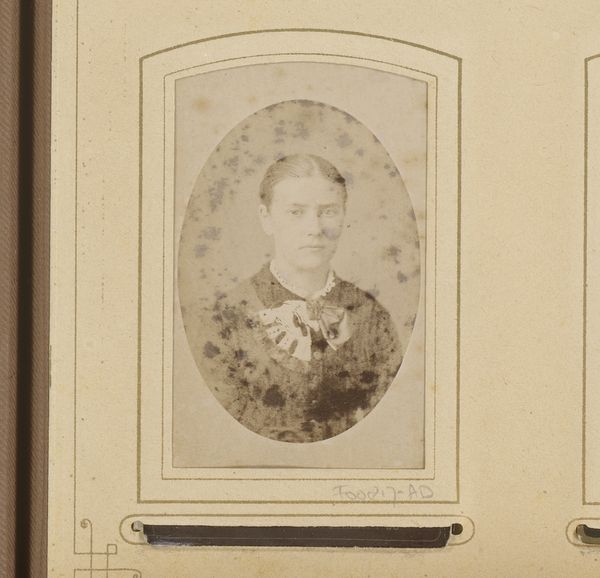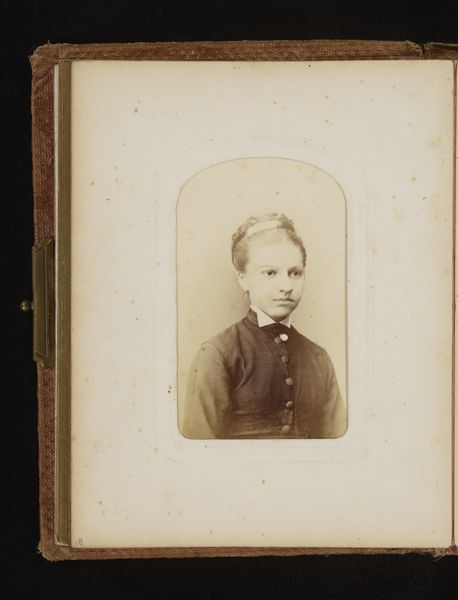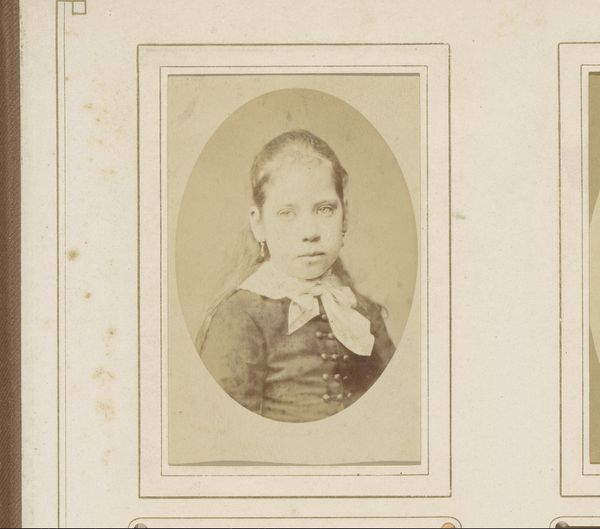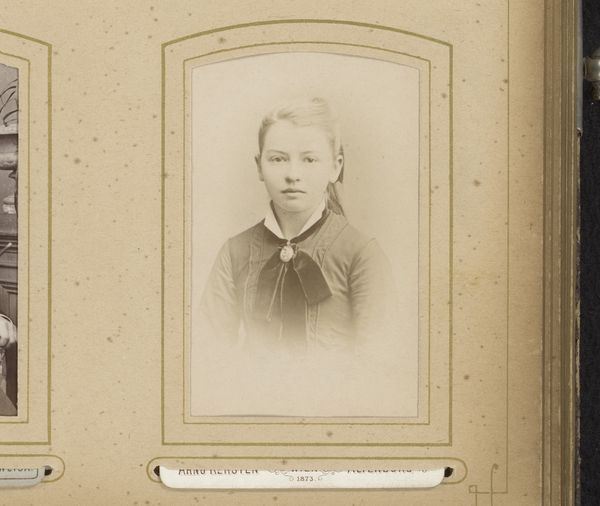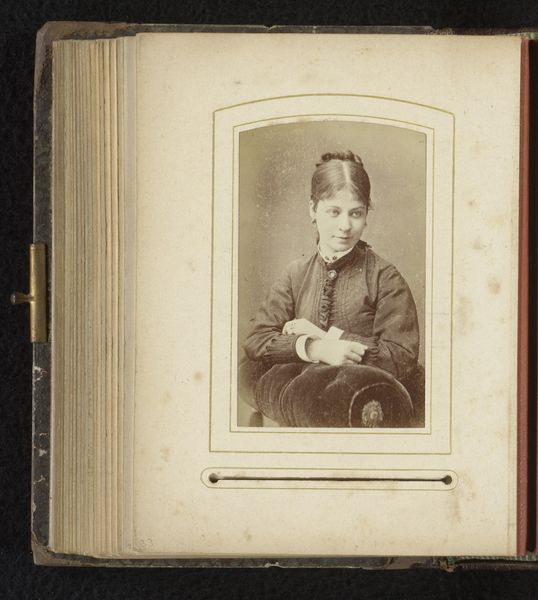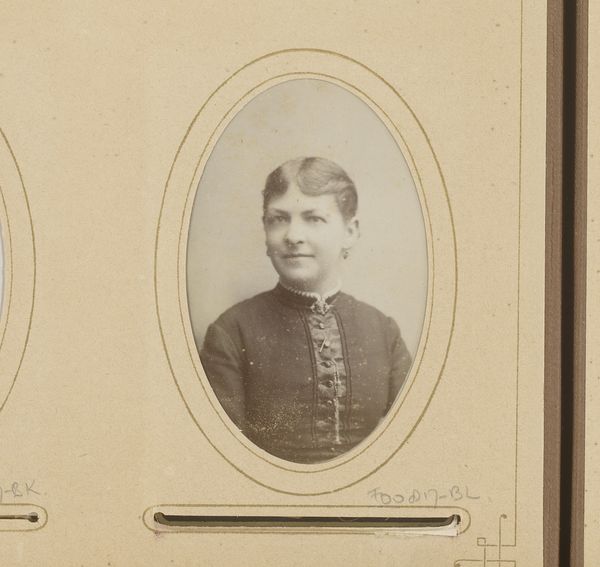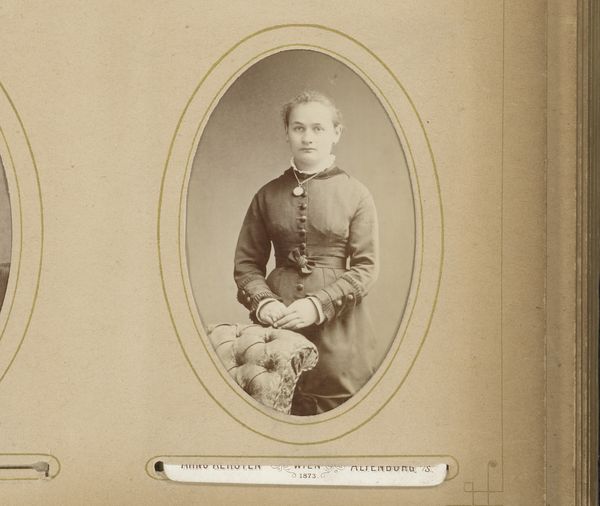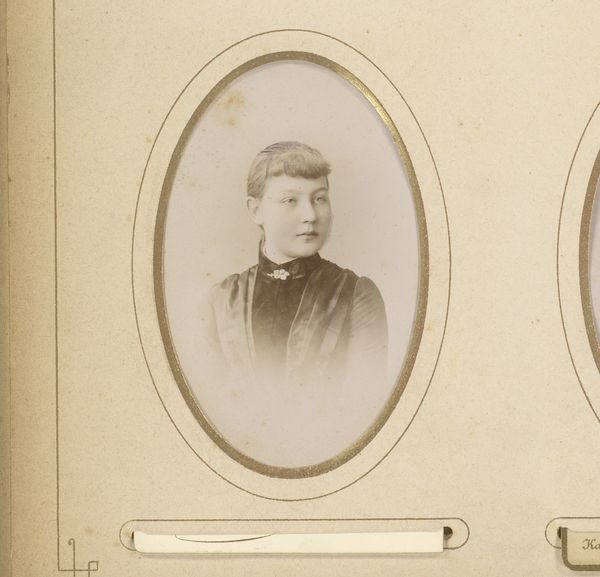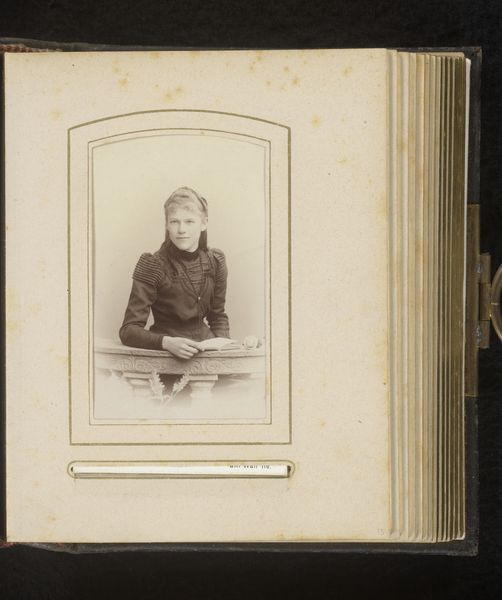
photography
#
portrait
#
charcoal drawing
#
charcoal art
#
photography
#
19th century
#
charcoal
Dimensions: height 82 mm, width 50 mm
Copyright: Rijks Museum: Open Domain
Curator: Jacques Chrispijn created this arresting portrait, "Portret van een meisje, leunend op een stoel," sometime between 1874 and 1877. Editor: My initial impression is a feeling of quiet melancholy. The girl’s posture, leaning on the chair, coupled with the muted tones of what appears to be a photograph… it speaks of a constrained Victorian era. Curator: Indeed, portrait photography was becoming increasingly accessible during this period. Chrispijn was part of a larger movement democratizing art, bringing portraiture to a broader segment of society. We see how these images became powerful tools for shaping identity and social standing. Editor: I’m drawn to the materiality of the photographic print itself. It looks like a cabinet card, intended for display. There is obviously careful posing, the fabric of her dress speaks volumes—clearly there was attention to how materials communicated social status. I am intrigued by what can we uncover about its construction and mass consumption. Curator: Certainly, the details contribute to the image’s cultural narrative. The girl's attire and the backdrop offer glimpses into the aesthetic and social norms of the time. This photo gives clues to 19th century middle-class society and how its members wish to represent themselves in art. Editor: There's something very intimate about seeing a face from so long ago, mediated by these processes, reminding us of labor and technology necessary to create this type of memory for the family’s private archive. The physical card existing in an archive suggests longevity too. Curator: Precisely! It’s a fascinating example of how artistic and photographic advancements influenced personal and public representation. Photography created a more lasting representation than previous painted works, contributing to personal and public memory and documentation, in ways which continue to evolve to this day. Editor: Yes, thinking about materiality and the production chain, that connects the artist to a wide network of consumers. We need to rethink conventional understandings of "art history" to include craft and labor! Curator: Indeed, this has truly shifted our perspective and I have begun to think more carefully about photographic documentation, so thank you. Editor: And I learned a great deal from your highlighting its public role, this portrait provides great clues to the history of labor and commercial networks too!
Comments
No comments
Be the first to comment and join the conversation on the ultimate creative platform.
